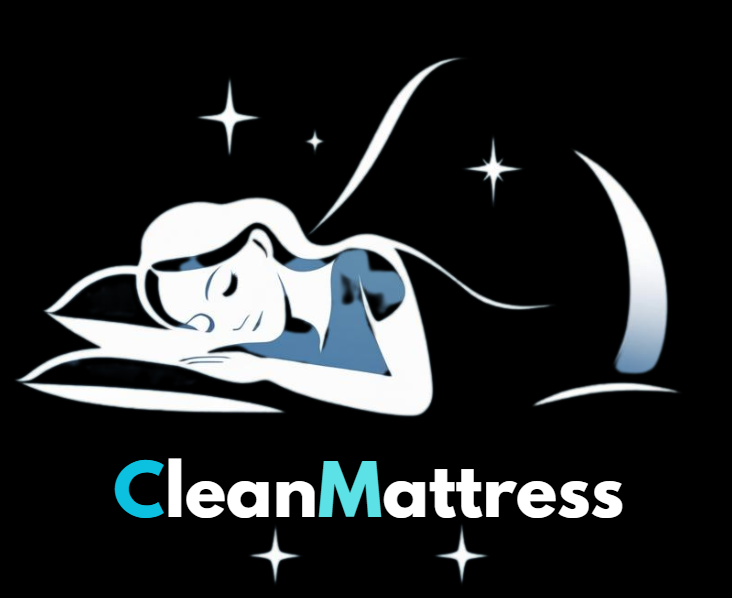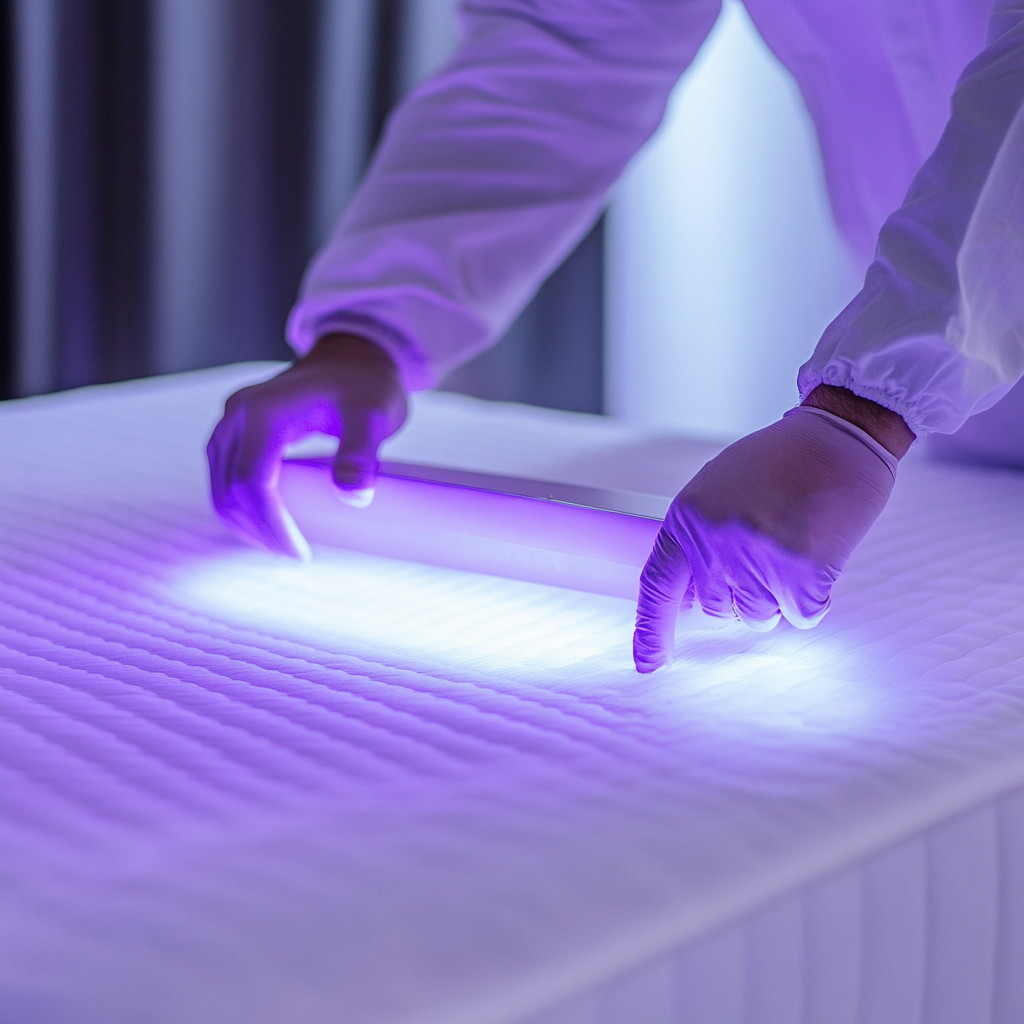Introduction
Mattress hygiene plays a critical role in maintaining a healthy sleep environment. Over time, dust mites, allergens, bacteria, and bodily fluids can accumulate deep within your mattress, leading to allergy flare-ups, respiratory issues, and poor sleep quality.
If you’re looking for a step-by-step guide to removing allergens from your mattress naturally, you’ve come to the right place.
In this post, we’ll cover how to deep clean a mattress for allergy relief at home, using effective methods—like UV-C light sterilization benefits for maintaining a hygienic mattress—and simple household tools. Ready to breathe easier and sleep better? Let’s dive in.
Why Deep Cleaning Your Mattress Matters
-
Allergen build-up: Dust mites and mold spores thrive in warm, dark environments, making your mattress an ideal breeding ground. Regular cleaning helps reduce these allergens, especially if you have asthma or allergies.
-
Extended mattress lifespan: How to extend your mattress lifespan with regular deep cleaning tips ensures your investment lasts longer by preventing premature wear and tear.
-
Improved sleep quality: A fresh, sterilized mattress prevents nighttime congestion, sneezing, and itching—so you wake up feeling refreshed.
-
Healthier environment: Eliminating bacteria and pathogens reduces the risk of infections, skin irritations, and odors caused by sweat or spills.
If you’d rather leave it to the professionals, consider CleanMattress’s professional mattress cleaning services—their eco-friendly, non-toxic solutions are designed to remove deep-seated allergens effectively.
Tools & Supplies You’ll Need
Before getting started, gather the following items to ensure a thorough, non-toxic mattress cleaning method:
-
Vacuum cleaner with upholstery attachment: A high-powered vacuum helps extract dust mites and surface debris.
-
Black filter pad or white microfiber cloth: For demonstration, a visible pad shows the dirt being removed (similar to how to deep clean a mattress for allergy relief at home demos).
-
Baking soda: Natural deodorizer and mild abrasive for lifting stains.
-
Mild dish soap or enzyme cleaner: Effective on bodily fluids and protein-based stains, like sweat or urine.
-
Spray bottle filled with water: For diluting cleaning solutions.
-
White vinegar: Natural disinfectant that also neutralizes odors.
-
UV-C light sterilizer (optional but highly recommended): Harnessing UV-C light sterilization benefits for maintaining a hygienic mattress, this device kills bacteria, viruses, and dust mites without chemicals.
-
Steam cleaner or steam iron with a steam burst: Provides deep heat to sanitize and remove stubborn allergens.
-
Mattress protector: To prevent future allergen build-up and extend the effects of your deep clean.
Step 1 – Remove Surface Debris with High-Powered Vacuum Extraction
-
Strip the bed: Remove all bedding—sheets, mattress cover, protector—and wash them on hot.
-
Thoroughly vacuum both sides: Using the upholstery attachment, vacuum the mattress top, sides, and edges. Pay special attention to seams and crevices, where dust mites congregate. This is a key part of how to deep clean a mattress for allergy relief at home, as it removes up to 90% of surface allergens.
-
Use a visible filter pad: If you want to visualize the effectiveness, press the vacuum onto a black filter pad or white microfiber cloth to see the dirt being collected. This helps reinforce the importance of regular deep cleaning.
Quick Tip: Vacuum at least twice—once lengthwise, then crosswise—to dislodge deeply embedded particles.
Step 2 – Spot-Treat Stains and Bodily Fluids Naturally
-
Identify common stains: Sweat, urine, blood, and other biological contaminants require specific treatments. If you’ve ever wondered how to remove urine and sweat stains from a mattress without harsh chemicals, this method will help.
-
Create a gentle enzyme solution: Mix one part mild dish soap or enzyme cleaner with two parts warm water in a spray bottle. Lightly mist the stained area—don’t oversaturate.
-
Blot, don’t scrub: Gently dab the stain with a clean white cloth, working from the outside in. This prevents the stain from spreading.
-
Apply white vinegar for odor removal: In a new spray bottle, combine equal parts water and white vinegar. Lightly mist the spot-treated area. The vinegar helps neutralize any lingering smells, which is crucial for eco-friendly mattress cleaning solutions for people with asthma.
-
Allow to air-dry: Prop the mattress in a well-ventilated area or position a fan to speed up drying. Avoid direct sunlight, which can fade the fabric.
Note: If you’re dealing with persistent stains or odor, consider CleanMattress’s specialized stain removal services—they handle even the toughest stains with hospital-grade sanitizing mist for long-term protection.
Step 3 – Apply Baking Soda for Deep Deodorization
-
Sprinkle a generous layer of baking soda: Cover the entire surface of your mattress with a light, even layer. This step aligns with how to deep clean a mattress for allergy relief at home, as baking soda helps absorb moisture and odors.
-
Massage it into the fabric: Use a soft brush or cloth to work the baking soda into seams and crevices. This mechanical action loosens additional particles.
-
Let it sit: Allow the baking soda to sit for at least 4–6 hours, or ideally overnight. The longer it rests, the more odors and moisture it absorbs.
-
Vacuum again: After the baking soda has done its job, vacuum the mattress once more—this time focusing on removing all traces of powder. You’ll notice a fresher surface and significantly reduced allergen levels.
Step 4 – UV-C Light Sterilization (Optional but Highly Effective)
Harnessing UV-C light sterilization benefits for maintaining a hygienic mattress, this step is critical for allergy sufferers:
-
Choose a reliable UV-C device: Ensure it’s designed for fabric sanitation.
-
Position the mattress: Lay it flat on a clean surface, ideally where you can rotate easily.
-
Scan both sides evenly: Hold the UV-C wand about 1–2 inches above the fabric. Move slowly in parallel strokes to ensure full coverage. Most UV-C devices recommend a 10–15 second exposure per 6–8 inches of surface.
-
Repeat on the reverse side: Flip the mattress and repeat the process. UV-C light kills up to 99.9% of bacteria, viruses, and dust mites without chemicals—perfect for cleaning memory foam mattresses safely: avoid common mistakes.
-
Follow safety guidelines: Always wear protective goggles and avoid direct skin exposure.
Step 5 – Steam Clean or Heat-Treat for Deep Sanitization
For those who want professional-grade results at home, steam cleaning a mattress for eliminating allergens is a highly recommended step:
-
Fill your steam cleaner tank: Use distilled water if possible to prevent mineral buildup.
-
Test a small area: Before tackling the entire mattress, test the steam on a hidden section to ensure the fabric won’t discolor.
-
Steam in a grid pattern: Work in rows, moving slowly to allow the steam to penetrate at least 2–3 inches into the foam or springs. The combination of moisture and heat kills remaining dust mites and bacteria.
-
Avoid over-saturation: Keep the steam cleaner moving. Excess moisture can lead to mold growth.
-
Air-dry completely: Use a fan or open windows to expedite drying. A fully dried mattress prevents mold and mildew, which is crucial if you want how often should you sanitize your mattress to prevent dust mites and mold.
Step 6 – Protect Your Mattress for Long-Term Allergy Relief
-
Invest in a high-quality mattress protector: Look for a breathable, waterproof cover that blocks dust mites. This simple step reduces the frequency of deep cleans and extends the life of your mattress.
-
Rotate or flip your mattress: Every 3–6 months, rotate a one-sided mattress or flip a double-sided model to ensure even wear and prevent sagging.
-
Maintain a clean sleep environment: Wash bedding weekly in hot water, vacuum bedroom floors, and keep pets off the bed. These habits complement your professional mattress cleaning vs DIY: cost-benefit comparison for homeowners decision, saving you money and hassle.
-
Schedule annual deep cleans: If you suffer from severe allergies, consider a full professional service at least once a year. Companies like CleanMattress offer eco-friendly, hospital-grade sanitization tailored to allergy relief.
Conclusion
Deep cleaning your mattress for allergy relief at home is both achievable and highly beneficial. By following these six steps—starting with vacuum extraction and ending with proper mattress protection—you’ll significantly reduce allergens, extend your mattress’s lifespan, and enjoy better sleep quality.
Remember to incorporate eco-friendly mattress cleaning solutions for people with asthma, utilize UV-C light sterilization benefits for maintaining a hygienic mattress, and perform routine maintenance to keep allergens at bay.
For hassle-free, professional results, consider CleanMattress’s expert services. With their hospital-grade sanitizing mist for long-term mattress protection, you can rest easy knowing your mattress is thoroughly cleaned and protected against allergens.
Sweet dreams—and allergy-free mornings—await!


0 Comments